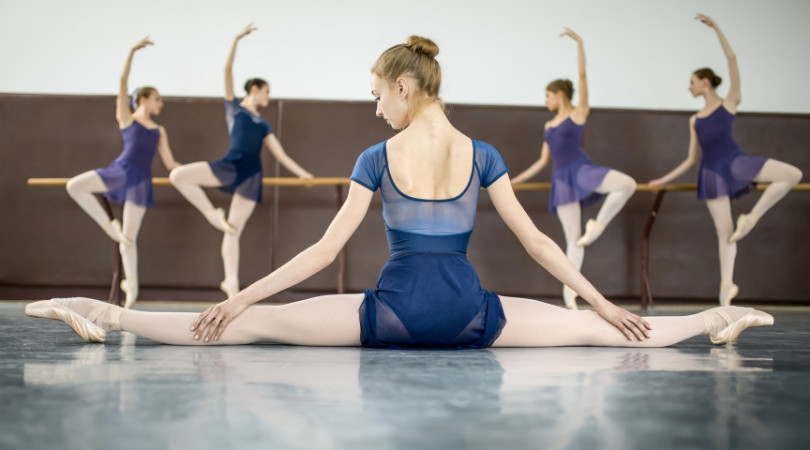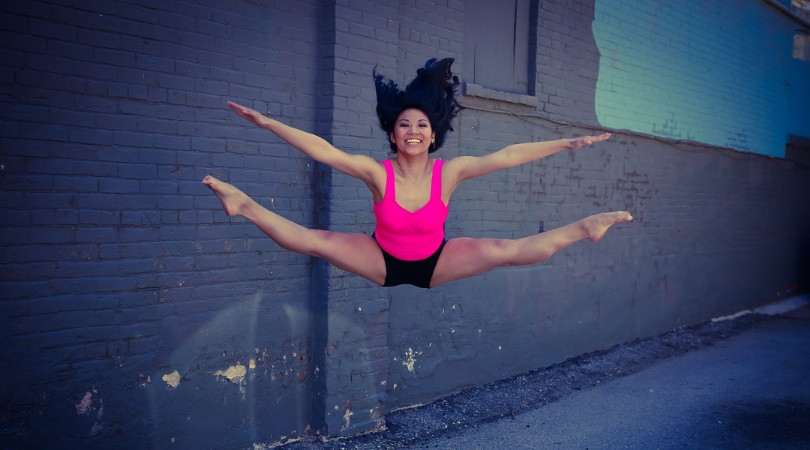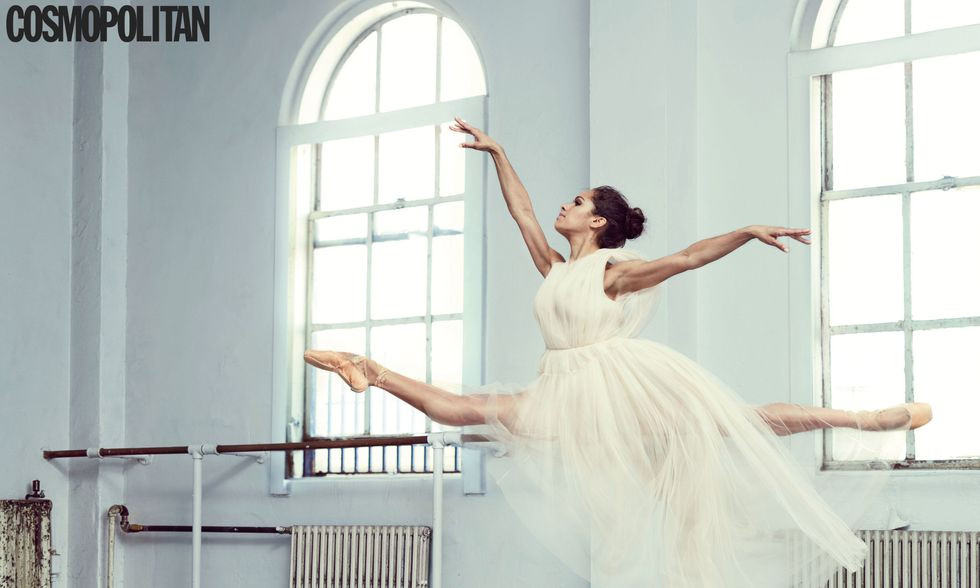Is Being A Professional Dancer A Good Job? Absolutely, if you possess unwavering passion and dedication! At ten-dance.com, we explore whether a dance career aligns with your aspirations, offering insights and guidance for aspiring performers. Discover how a professional dance career can be a fulfilling path with the right mindset and preparation, enhancing your artistic journey.
1. What are the Main Considerations Before Becoming a Professional Dancer?
Before taking the leap into a professional dance career, several key factors warrant careful consideration:
| Factor | Description |
|---|---|
| Uncertainty | The unpredictable nature of dance careers, including job security and potential for sudden career changes due to injuries. |
| Briefness | The relatively short duration of a dance career, often ending before traditional retirement age, necessitating alternative career plans. |
| Auditions | The constant need to audition, facing intense competition and frequent rejection, requiring resilience and a strong mental attitude. |
| Physical Toll | The demanding physical requirements of dance, leading to potential injuries, chronic pain, and the need for extensive physical therapy. |
| The Unknown | The reality of professional dancing might differ significantly from expectations, requiring adaptability and a willingness to embrace the unknown. |
| Passion | The unwavering love for dance that fuels perseverance through challenges, making the demanding lifestyle worthwhile. |
| Potential | The opportunities for growth, creativity, and influence beyond performance, such as teaching, choreography, and arts administration. |
| The Verdict | Ultimately, the decision rests on individual priorities, weighing the rewards and challenges of a dance career against personal goals. |
2. How Does Uncertainty Affect a Professional Dancer’s Career?
Uncertainty is a constant companion for professional dancers, impacting their careers in several significant ways. The transient nature of dance contracts means job security can be precarious. Unlike many other professions, a dancer’s career can be abruptly cut short due to injury, making long-term planning difficult. Furthermore, the fierce competition for roles amplifies this uncertainty, as securing the desired positions is never guaranteed. Navigating this landscape requires resilience, adaptability, and a proactive approach to career management.
 A dancer stands pensively in a dimly lit studio, symbolizing the uncertainty inherent in a dance career.
A dancer stands pensively in a dimly lit studio, symbolizing the uncertainty inherent in a dance career.
3. What is the Average Length of a Professional Dance Career?
The perceived length of a dance career often differs from reality. While many dancers aspire to perform well into their late 30s or early 40s, research suggests that the average professional dance career lasts around 15 years. This brevity underscores the importance of having alternative career plans in place, as dancers will likely need to transition into new roles before reaching retirement age. This could include teaching, choreography, arts administration, or pursuing entirely different fields.
 A dancer gracefully leaps across the stage, representing the fleeting nature and beauty of a professional dance career.
A dancer gracefully leaps across the stage, representing the fleeting nature and beauty of a professional dance career.
4. What is the Role of Auditions in a Dancer’s Professional Life?
Auditions are a fundamental and often grueling aspect of a professional dancer’s life. Dancers frequently face intense competition, with numerous candidates vying for limited roles. This constant auditioning process can be emotionally taxing, requiring dancers to develop resilience and maintain a positive attitude in the face of frequent rejection. Landing a coveted spot can take months or even years of persistent effort, highlighting the importance of perseverance and a strong work ethic.
5. How Can Dancers Cope with the Physical Demands of Their Profession?
The physical demands of professional dancing are exceptionally high, increasing the risk of injuries such as tendinitis, stress fractures, and ligament tears. Dancers must prioritize their physical well-being through diligent training, proper warm-up and cool-down routines, and adequate rest. Access to quality medical care, including physical therapy and sports medicine, is also crucial for managing injuries and promoting long-term health. Despite these precautions, dancing through pain is sometimes unavoidable, underscoring the need for careful decision-making to prevent further injury and career-ending setbacks.
 A dancer grimaces slightly while stretching, illustrating the physical toll and dedication required in a dance career.
A dancer grimaces slightly while stretching, illustrating the physical toll and dedication required in a dance career.
6. What Are the Potential Financial Challenges for Professional Dancers?
Financial stability can be a significant challenge for professional dancers. Unlike athletes in major sports leagues, dancers often earn modest salaries, making it difficult to save for retirement or cover unexpected expenses, such as medical bills related to injuries. Many dancers supplement their income with part-time jobs or teaching positions. Financial planning and budgeting are essential skills for navigating the financial uncertainties of a dance career.
7. Why is Passion So Important for a Professional Dancer?
Passion is the driving force that sustains dancers through the numerous challenges they face. The unwavering love for dance can override the difficulties, including intense competition, physical pain, and financial instability. This passion fuels dedication, resilience, and a willingness to persevere despite the odds. Ultimately, it is this deep emotional fulfillment that makes the demanding lifestyle of a professional dancer worthwhile for those truly committed to their art.
 A dancer's face shows pure joy and passion during a performance, highlighting the emotional fulfillment of a dance career.
A dancer's face shows pure joy and passion during a performance, highlighting the emotional fulfillment of a dance career.
8. What are Potential Career Paths After a Dance Career Ends?
The skills and knowledge acquired during a dance career can open doors to various post-performance opportunities. Many dancers transition into teaching, sharing their expertise with aspiring performers. Choreography is another natural progression, allowing dancers to create new works and express their artistic vision. Other options include arts administration, studio ownership, dance criticism, and related fields. The key is to recognize the transferable skills gained through dance, such as discipline, creativity, and communication, and apply them to new endeavors. According to research from The Juilliard School, in July 2025, dancers who transitioned into teaching roles reported higher job satisfaction.
9. What Skills Can Dancers Leverage After Their Performance Career?
Dancers possess a wealth of transferable skills applicable to various fields beyond performance. Discipline and time management are honed through rigorous training schedules. Creativity and artistic expression are valuable assets in any creative industry. Communication and collaboration skills are developed through working with choreographers, directors, and fellow dancers. Problem-solving abilities are essential for overcoming challenges in rehearsals and performances. These skills, combined with a strong work ethic, make dancers well-prepared for success in diverse career paths.
10. How Can ten-dance.com Support Aspiring and Professional Dancers?
At ten-dance.com, we understand the unique challenges and rewards of a dance career. We offer a comprehensive resource for dancers of all levels, providing:
- Online dance lessons for various styles and skill levels.
- A directory of reputable dance schools and instructors in the USA.
- Tips and techniques to improve dance skills and prevent injuries.
- Information on dance events, competitions, and auditions.
- A vibrant online community for dancers to connect and share experiences.
We aim to empower dancers with the knowledge, skills, and support they need to thrive in their careers.
11. What are the Benefits of Pursuing a Career as a Professional Dancer?
Despite the challenges, a career as a professional dancer offers numerous benefits:
- Artistic Expression: Dance provides a unique outlet for creative expression and storytelling.
- Physical Fitness: The demanding nature of dance promotes exceptional physical fitness and overall health.
- Personal Growth: Overcoming challenges in dance fosters resilience, discipline, and self-confidence.
- Performance Opportunities: The thrill of performing on stage and sharing your art with audiences.
- Community: Being part of a supportive and passionate dance community.
For those with unwavering dedication and a love for dance, these rewards can outweigh the difficulties and make a dance career a fulfilling and enriching experience.
12. How Can Dancers Prepare for the Transition After Their Performing Career?
Preparing for the transition after a performing career is crucial for a dancer’s long-term well-being. Here’s a table outlining key strategies:
| Strategy | Description |
|---|---|
| Education & Training | Pursue further education or vocational training in a related field such as dance education, arts administration, or a completely different area of interest. |
| Financial Planning | Develop a financial plan that includes savings, investments, and strategies for generating income after the performing career. |
| Networking | Build a strong network of contacts within the dance community and beyond to explore potential job opportunities and collaborations. |
| Skill Development | Identify transferable skills gained through dance, such as discipline, creativity, and communication, and develop them further for application in new career paths. |
| Career Counseling | Seek guidance from career counselors or mentors who can provide support and advice on career planning and job searching. |
| Personal Well-being | Prioritize mental and emotional well-being during the transition process to cope with the challenges and maintain a positive outlook. |
| Explore New Interests | Be open to exploring new interests and passions outside of dance to discover potential career paths that align with personal goals and values. |
| Develop a Business Plan | If considering entrepreneurship, create a detailed business plan that outlines the business concept, target market, financial projections, and marketing strategies. |
| Gain Experience | Seek internships, volunteer opportunities, or part-time jobs in the desired field to gain practical experience and build a resume. |
| Stay Connected | Maintain connections with former colleagues and mentors to stay informed about industry trends and potential job opportunities. |
13. What are Some Common Injuries Experienced by Professional Dancers?
Professional dancers are prone to various injuries due to the repetitive and physically demanding nature of their profession. These can range from acute injuries sustained during a specific incident to chronic conditions that develop over time. Some of the most common injuries include:
| Injury | Description | Prevention Tips |
|---|---|---|
| Ankle Sprains | Occur when the ligaments supporting the ankle are stretched or torn, often due to sudden twists or landings. | Proper warm-up, ankle strengthening exercises, supportive footwear. |
| Stress Fractures | Small cracks in the bones, typically in the feet or lower legs, caused by repetitive stress and overuse. | Gradual increase in training intensity, adequate rest, proper nutrition. |
| Tendinitis | Inflammation of the tendons, often affecting the Achilles tendon, patellar tendon, or tendons in the hip or shoulder. | Proper warm-up and cool-down, stretching, avoiding overuse. |
| Hip Impingement | A condition in which the bones of the hip joint rub against each other, causing pain and limited range of motion. | Strengthening hip muscles, avoiding excessive hip flexion. |
| Knee Injuries | Including meniscus tears, ligament sprains, and patellofemoral pain syndrome, often caused by improper alignment or sudden movements. | Strengthening knee muscles, proper alignment, avoiding excessive stress on the knee. |
| Back Pain | Can result from muscle strains, disc problems, or spinal misalignments, often exacerbated by repetitive movements and poor posture. | Strengthening core muscles, maintaining good posture, proper lifting techniques. |
| Shoulder Impingement | Occurs when the tendons of the rotator cuff are compressed or irritated, causing pain and limited range of motion. | Strengthening shoulder muscles, proper warm-up, avoiding overhead movements. |
| Plantar Fasciitis | Inflammation of the plantar fascia, a thick band of tissue on the bottom of the foot, causing heel pain. | Stretching the plantar fascia, supportive footwear, avoiding overpronation. |
| Muscle Strains | Occur when muscle fibers are stretched or torn, often due to sudden movements or overexertion. | Proper warm-up, stretching, avoiding overexertion. |
| Bunion | A bony bump that forms on the joint at the base of your big toe. | Wearing shoes with a wide toe box to avoid toe compression. |
Preventing injuries is crucial for professional dancers, and a comprehensive approach is necessary. Proper warm-up and cool-down routines, stretching exercises, strengthening exercises, and appropriate rest are essential components of injury prevention. Additionally, professional dancers should seek guidance from healthcare professionals such as physical therapists, athletic trainers, and sports medicine physicians to address any underlying issues and develop personalized injury prevention strategies.
14. How Can Dancers Balance Their Physical and Mental Well-being?
Balancing physical and mental well-being is essential for dancers to maintain their overall health, cope with stress, and prevent burnout. Here are some strategies to promote balance:
| Strategy | Description |
|---|---|
| Prioritize Self-Care | Schedule time for activities that promote relaxation and well-being, such as taking a warm bath, reading a book, or spending time in nature. |
| Practice Mindfulness | Engage in mindfulness exercises such as meditation or deep breathing to reduce stress and improve focus. |
| Maintain a Healthy Diet | Consume a balanced diet rich in nutrients to fuel the body and support physical and mental health. |
| Get Adequate Sleep | Aim for 7-9 hours of quality sleep per night to allow the body and mind to rest and recover. |
| Seek Social Support | Connect with friends, family, or support groups to share experiences and receive emotional support. |
| Set Boundaries | Establish clear boundaries between work and personal life to prevent burnout and maintain a healthy balance. |
| Engage in Hobbies | Pursue hobbies or interests outside of dance to provide a creative outlet and reduce stress. |
| Seek Professional Help | Don’t hesitate to seek professional help from a therapist or counselor if experiencing persistent stress, anxiety, or depression. |
| Practice Positive Self-Talk | Challenge negative thoughts and replace them with positive affirmations to boost self-esteem and resilience. |
| Take Breaks | Take regular breaks throughout the day to rest and recharge. |
15. What are some tips for aspiring professional dancers?
Aspiring professional dancers should be prepared for a challenging but rewarding career. Here are some tips to increase their chances of success:
| Tip | Description |
|---|---|
| Train diligently | Dedicate time and effort to hone your technique and artistry in various dance styles. |
| Seek guidance from experienced mentors | Learn from the wisdom and knowledge of seasoned dancers and instructors. |
| Network with industry professionals | Build connections with choreographers, directors, and other dancers to expand your opportunities. |
| Develop a strong resume and audition portfolio | Showcase your skills and experience to impress potential employers. |
| Stay resilient and persistent | Don’t be discouraged by rejection; keep improving and pursuing your goals. |
| Maintain a positive attitude | Believe in yourself and your abilities, and approach challenges with optimism. |
| Stay adaptable and open to new opportunities | Be willing to learn new styles, travel to different locations, and take on different roles. |
| Prioritize self-care | Take care of your physical and mental health to prevent burnout and stay motivated. |
| Be professional and respectful | Treat everyone with courtesy and respect, and maintain a high level of professionalism in all your interactions. |
| Never stop learning and growing | Stay curious and continue to seek out new knowledge and experiences to enhance your skills and artistry. |
FAQ About a Professional Dance Career:
1. Is a professional dance career stable?
No, a professional dance career is generally not considered stable due to its short duration and competitive nature.
2. What is the average salary for a professional dancer?
The average salary for a professional dancer varies greatly depending on experience, location, and type of dance, but it is often lower than many other professions.
3. What are the common physical demands of being a professional dancer?
Common physical demands include long hours of rehearsal, repetitive movements, and high risk of injury.
4. How important is formal training for a professional dancer?
Formal training is essential for developing the technique, strength, and artistry required for a professional dance career.
5. What are some alternative career options for dancers?
Alternative career options include teaching dance, choreography, arts administration, and fitness instruction.
6. How can dancers prepare for the end of their performing careers?
Dancers can prepare by developing alternative skills, pursuing further education, and planning for a career transition.
7. What are the benefits of joining a dance union?
Joining a dance union can provide benefits such as health insurance, retirement plans, and protection against unfair labor practices.
8. How can dancers promote themselves and find work?
Dancers can promote themselves through auditions, networking, online profiles, and marketing materials.
9. What are the challenges of balancing personal life with a dance career?
Balancing personal life with a dance career can be challenging due to long hours, travel, and demanding physical requirements.
10. How can dancers stay motivated and passionate throughout their careers?
Dancers can stay motivated by setting goals, seeking inspiration from others, and staying connected to their love of dance.
 Misty Copeland posing gracefully, exemplifying the potential and artistry of a professional dancer.
Misty Copeland posing gracefully, exemplifying the potential and artistry of a professional dancer.
The Final Verdict: Is a Dance Career Right for You?
Ultimately, the decision to pursue a career as a professional dancer is a personal one. It requires careful consideration of the challenges and rewards, as well as a realistic assessment of your skills, passion, and resilience. If you are deeply committed to dance and willing to overcome the obstacles, a professional dance career can be a fulfilling and enriching experience. Remember, ten-dance.com is here to support you on your journey, providing the resources and community you need to succeed.
 Two dancers silhouetted against a vibrant sunset, symbolizing the culmination of hard work and dedication in a dance career.
Two dancers silhouetted against a vibrant sunset, symbolizing the culmination of hard work and dedication in a dance career.
Ready to explore your dance potential? Visit ten-dance.com today to discover a wealth of dance lessons, information on local classes and events, and a thriving community of fellow dance enthusiasts. Your journey to a fulfilling dance career starts here! For inquiries, visit us at 60 Lincoln Center Plaza, New York, NY 10023, United States, call +1 (212) 769-7000, or explore ten-dance.com.


